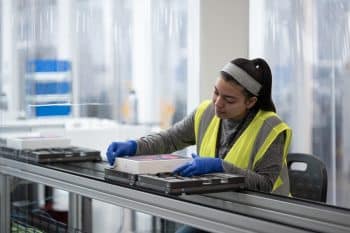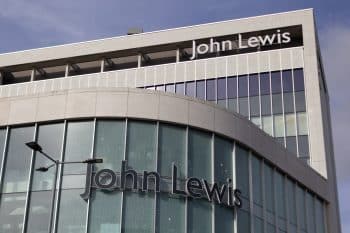Home » UK Business News » Boxing Day footfall bounces back post-Covid despite the cost of living crisis and train strikes
Boxing Day footfall bounces back post-Covid despite the cost of living crisis and train strikes
https://www.whatjobs.com/news/united-kingdom/uk-business-news/boxing-day-footfall-bounces-back-post-covid-despite-the-cost-of-living-crisis-and-train-strikes

By Nagasunder in UK Business News, posted December 28, 2022

Despite ongoing train strikes, Boxing Day footfall increased 40 percent year on year as customers sought bargains amid the cost-of-living crisis.
Despite this, footfall was still significantly lower than before the pandemic, with business leaders urging the government to help accelerate retail's recovery from the pandemic as it suffers because of the economic downturn and soaring inflation.
However, according to Springboard, the industry analyst, Monday's data showed that footfall was up by 38.8 percent compared to last year for high streets, retail parks, and shopping centres.
READ MORE: RAIL STRIKES SPOIL BOXING DAY SHOPPING SPREE
The statistics showed increases by 44.1 percent on high streets, 40.4 percent in shopping centres, and 25.9 percent in retail parks.
Despite numerous nationwide train strikes over the holiday season, foot traffic in central London increased by 139.2 percent as of lunchtime.
Only 7.8 percent less was spent in London than on the same day in 2019, pre pandemic.
READ MORE: MARKS & SPENCER TO CLOSE STORES ON BOXING DAY AS IT EXTENDS OPENING HOURS AHEAD OF CHRISTMAS
Boxing Day 2021 falling on a Sunday as opposed to a weekday was certainly a contributing reason in the surge, according to Diane Wehrle, insights director at Springboard, but she also noted that the most recent data indicated that the morning was unusually busy this year.
She said the statistics were “far from doom and gloom” for the high street, as retailers brace for a tumultuous year against the backdrop of a cost of living crisis.
Wehrle said: “These positive results come in line with the first Christmas post-pandemic without any formal social restrictions and in spite of the cost of living crisis and the rail strikes, which inevitably affect retailers negatively,”
READ MORE: PETS AT HOME TO CLOSE ALL STORES ON BOXING DAY IN RECOGNITION OF STAFF’S HARD WORK
She added that train strikes had had an effect on footfall this year, adding: “Inevitably there will have been an effect. I think we can see that quite clearly in the gap in footfall between 2022 and 2019.
“Prior to the train strikes, there was an ongoing gap of around 12 percent in footfall between 2019 and 2022.
London’s West End performed particularly strongly this year, with footfall up 65 percent compared with last Boxing Day.
READ MORE: SCAMS TO BE AWARE OF AMID THE UK’S COST OF LIVING CRISIS
The New West End Company, of which 600 retailers throughout the central London shopping area are represented by, said the figures were “positive news” for the high street.
Chief executive Dee Corsi said: “Across the West End, we have seen a welcomed increase in Boxing Day footfall, with figures up by 65 percent on last year.
“This is positive news for the high street; however visitor numbers remain 16 percent lower than pre-pandemic levels – we must give retailers and leisure occupiers the best possible chance to seize upon improved conditions and grow in 2023.”
Need Career Advice? Get employment skills advice at all levels of your career
However, she commented that an end to the train strikes, and lifting Sunday trading restrictions, would be necessary for the capital’s businesses to “truly prosper”.
“Only by all parties coming to an agreement to end the rail strikes, and the Government looking at new growth measures such as the lifting of Sunday trading restrictions in London’s international centres, can our high street businesses truly prosper as we head into the new year,” she said.
Source: Retail Gazette
Follow us on YouTube, Twitter, LinkedIn, and Facebook.











